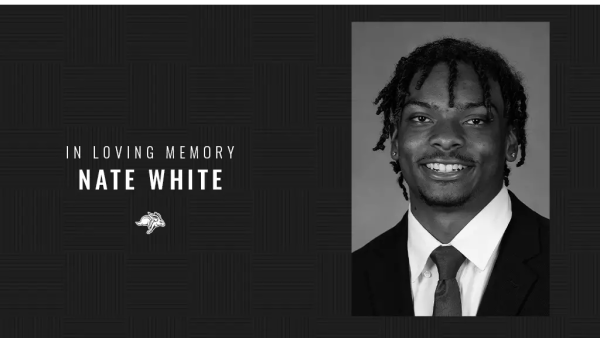Loans make higher education possible for many, may cause headaches later
March 30, 2011
As costs rise and state support declines, financial aid continues to be crucial to attending college.
News Editor
Student loans are simply that: loans, and they must be paid back. With costs increasing and state support declining, many students unknowingly fall further and further into the red.
“I graduated with a little over $20,000 in student loans,” said Zach Anderson, SDSU alum and news editor at the Starbuck Times in Starbuck, Minn. “I didn’t get any financial aid and had one scholarship that was about $500 a semester, but other than that I had all loans.”
Jay Larsen, director of financial aid at SDSU, said as costs increase, financial aid becomes even more significant to students.
“Student financial aid is very important for students and families and their choice to attend higher education,” Larsen said. “Financial aid helps students attend college, and stay in college, because it provides the resources or money to pay for school.”
Gov. Dennis Daugaard’s proposed budget for fiscal year 2012 could make financial aid even more important for students. Daugaard’s budget proposed a 10 percent cut in state spending, which could equal about $4.7 million in cuts to SDSU and a rise in tuition of 6 to 8 percent.
Anderson said student loans were important while he was in school.
“I didn’t have a job or anything, so I probably wouldn’t have even been able to go to college without loans,” Anderson said. “I’m sure there are a lot of kids that wouldn’t be able to go if they didn’t have that financial aid available.”
Tia Krier, a sophomore pharmacy major, worries about the amount of money she has to borrow for school.
“It’s really scary to see how much money I’m racking up with student fees,” she said. “Going into the pharmacy program and looking at what I’ll have to pay in the future is overwhelming.”
According to the South Dakota Board of Regents 2011 Factbook, in 2010, 88 percent of SDSU students received some form of financial aid, with the average amount being almost $10,000.
About $28.5 million in non-obligation financial aid was given to SDSU students in 2010, according to the Factbook. Larsen described non-obligation aid as awards given based on merit or financial need. It is aid students don’t have to work for or pay back. Non-obligation financial aid includes grants, the Opportunity Scholarship and institutional scholarships.
“Scholarship opportunities provide financial assistance but also recognition of a students achievements and career interests,” Larsen said. “Scholarships are available only through the generosity of donors.”
According to the Factbook, nearly $77 million was given to SDSU students in obligation aid in 2010. Obligation aid means it must be paid back. Larsen said students can pay these back by federal and alternative loans or funds collected through work study and non-work study employment.
“Federal financial aid programs and primarily student loans are available to help students pay for their higher education expenses, and invest in their futures so that they can repay their student loans and also have the career opportunities they are interested in,” Larsen said.
As shown in the Factbook, a much larger amount of obligation aid is given. Larsen said this is because some students are starting to borrow more money while in school, partly because of the rising costs of education.
Anderson said he didn’t pay close attention to the amount of student loan debt he acquired throughout college.
“I didn’t even think about it until the exit interview; I didn’t really care until then,” he said. “It’s not something you have to pay right away, so it’s not really a reality until you graduate because that’s when the bills come.”
Larsen said students should pay attention to how much debt they are acquiring through out college.
“Students can view their federal student loans at www.nslds.ed.gov,” Larsen said. “I encourage students to check them often.”
Larsen said payments on student loans start six months after graduation, while federal student loans have a 10-year repayment period, unless the student has them deferred. Depending on the amount borrowed it could take up to 25 years for some students to pay back their student loans.
“The loan repayment rate is where students have proven it is a worthy investment in their education,” Larsen said. “The loan repayment rate at SDSU is over 99 percent.”
Larsen said interest rates vary depending on the type of loan. Federal loans have an interest rate of 3.4 percent for the Federal Direct Subsidized loan or 6.8 percent for the Unsubsidized Federal Direct Loan.
Anderson said he’s been fortunate and able to start paying his loans off quickly. Since graduating in December 2009, he’s been able to pay off nearly half of his student loan debt.
“When I first got out of college I lived at home, so it was a lot easier to pay them off quickly,” he said. “Now that I have to pay rent I can’t pay as much at a time, but it will definitely be nice when I get them paid off… it kind of looms over your head when you know that’s where half of your paycheck is going.”
Krier said she is expecting it to take years for her to pay off her student loan debt.
“I think it will probably take like 15 years,” she said. “I know that someday because I’m going into the healthcare field I’ll be able to pay it off, but I can’t imagine how others feel.”


















